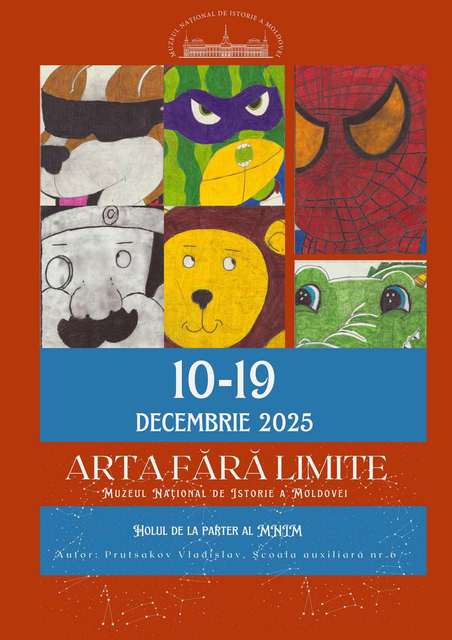  Events Archive Events Archive
Opening of the exhibition "Bessarabian Bulgarians and the Liberation of Bulgaria"
March 4, 2023
On March 4, 2023, in the hall of the House of Culture of the city of Taraclia, was opened the photo-documentary exhibition "Bessarabian Bulgarians and the Liberation of Bulgaria", dedicated to the 145 years since the liberation of Bulgaria from the domination of the Ottoman Empire.
During the exhibition launch event, the vice-president of the Taraclia district, Mr. Alexandru Borimecicov, emphasized the importance of the exhibition and it must to be sent to all educational institutions in the Taraclia district to popularize knowledge about the Bessarabian Bulgarians, who participated in the Liberation of the Motherland their history. Also, Mr. Borimecicov mentioned that in autumn, the exhibition will be sent to Bulgaria, where it will be temporarily exhibited in the Presidency and Parliament of the Republic of Bulgaria. The General Director of the National Museum of History of Moldova, dr. hab. Eugen Sava reiterated NMHM's openness to the initiative of the Taraclia District Council and the Scientific Society of Bulgarians from the Republic of Moldova to jointly organize this exhibition. The exhibition includes documents and photographs from the NMHM funds, and the purpose of the museum, as a cultural, scientific and educational institution, is to promote historical values and present them to the general public objectively. The Consul of the Republic of Bulgaria in Taraclia, Mr. Liubomir Dimov, congratulated everyone present on the National Day of Bulgaria. Mr. Dimov thanked the National Museum of History of Moldova for the fruitful collaboration with Bulgarian scientific and cultural public organizations from the Republic of Moldova and expressed his desire to personally visit the National Museum of History of Moldova to see the originals of some objects, which are related to the history of Bulgaria and Moldovan-Bulgarian cultural relations. The President of the Scientific Society of Bulgarians from the Republic of Moldova dr. hab. Ivan Duminica pointed out the practical value of the exhibition, which will be used as course support for the subject of studies "History, tradition and culture of the Bulgarian people", which is taught in schools in the Taraclia district. Toward the end of the event, Mrs. Maria Evdochimova, NMHM museographer, presented the exhibition to the audience, telling in the smallest details about the images, documents and objects present on the exhibition banners. Ms. Evdochimova reviewed the events that led to the liberation of Bulgaria and reported on the Bessarabian Bulgarians who participated in these processes. As a sign of gratitude, for the realization of this exhibition, the vice-president of the Taraclia district, Mr. Alexandru Borimecicov, awarded diplomas of honor to the NMHM team, represented by Mr. Eugen Sava, General Director, Mrs. Livia Sîrbu, Deputy Director for Communication, Mrs. Maria Evdochimova, museographer, Sorin Șclearuc, main specialist in communication, and Mr. Ivan Duminică, President of the Scientific Society of Bulgarians from the Republic of Moldova.
|
 31 August 1989 St., 121 A, MD 2012, Chisinau, Republic of Moldova
31 August 1989 St., 121 A, MD 2012, Chisinau, Republic of Moldova































































